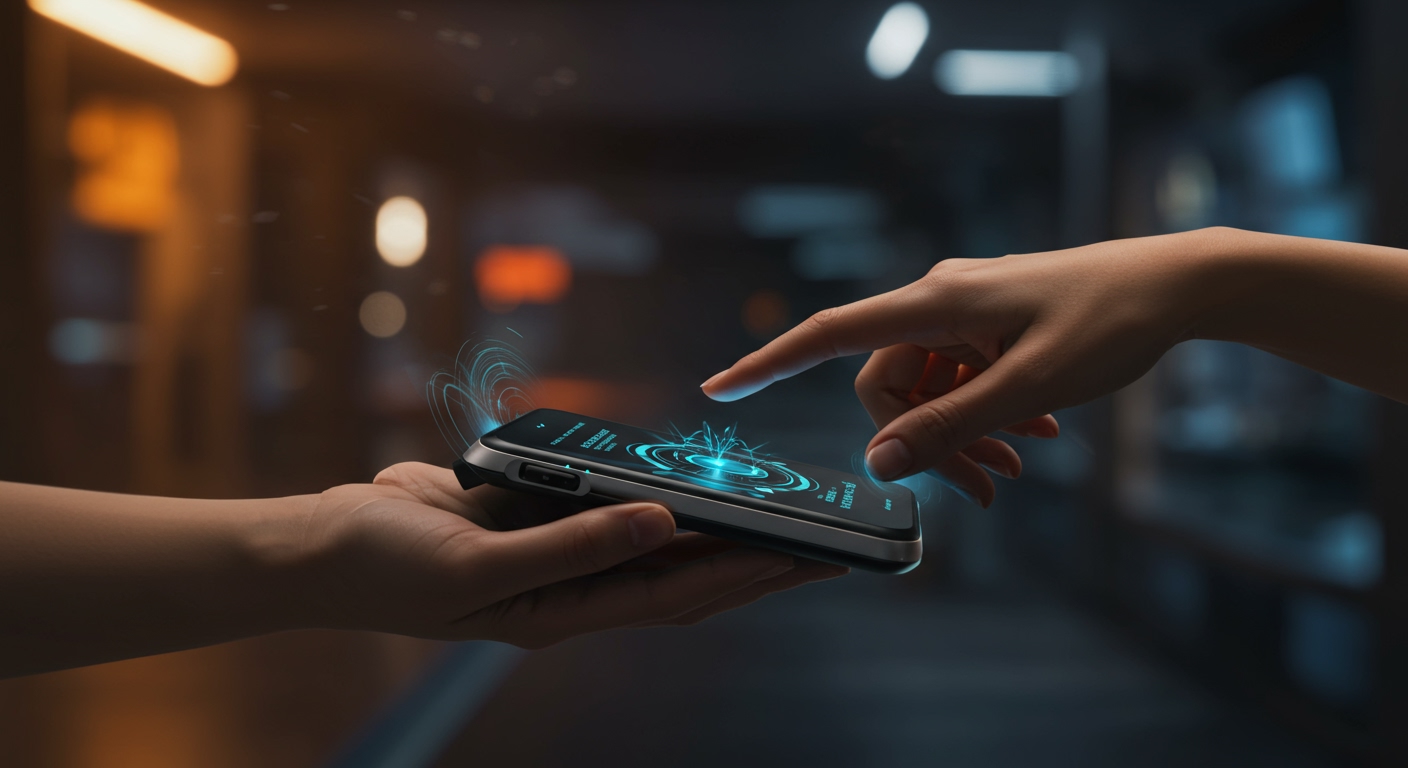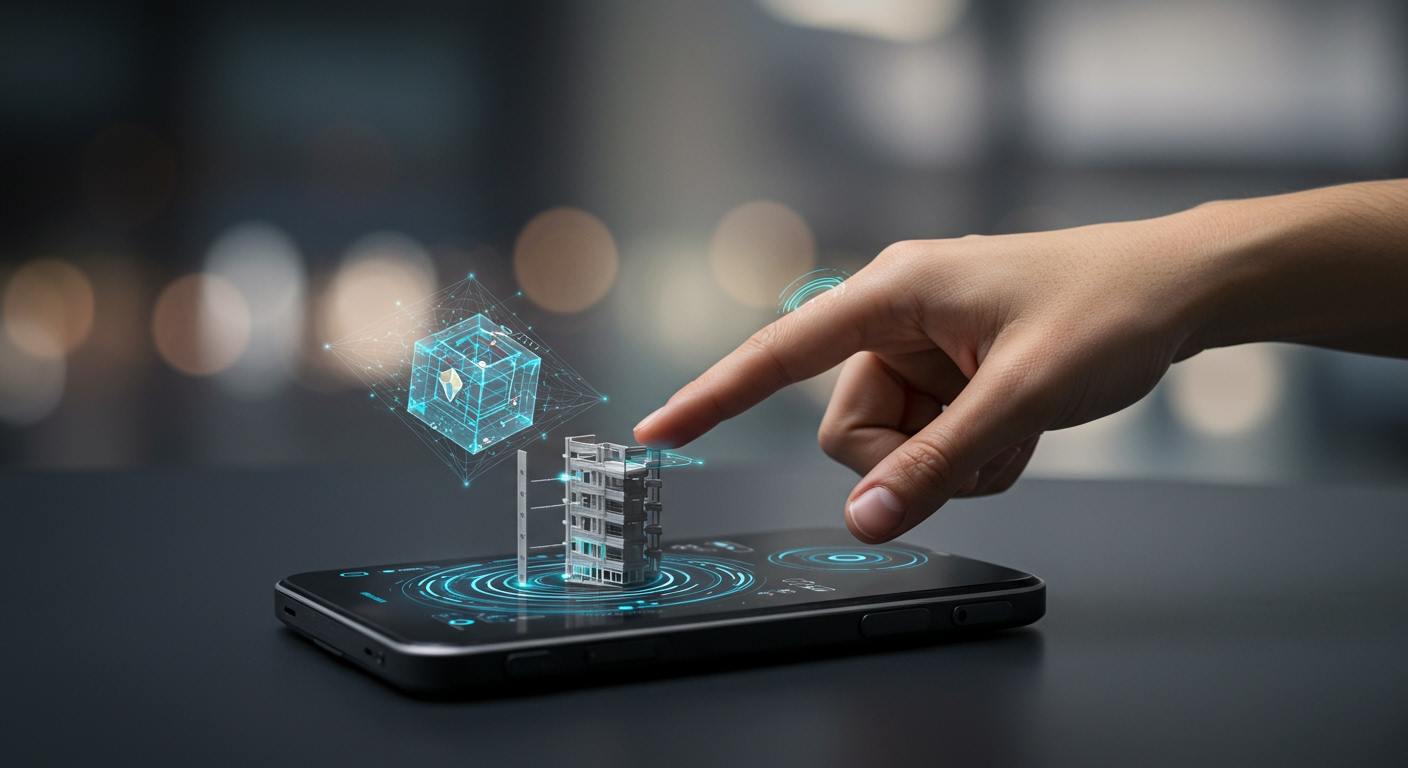Beyond the Screen: How Haptic Feedback is Revolutionizing Immersive Experiences
Beyond the Screen: How Haptic Feedback is Revolutionizing Immersive Experiences
Explore how haptic feedback transcends traditional screens, revolutionizing immersive experiences in gaming, healthcare, and beyond. Discover the science and future of touch technology.
Key Points
- Haptic feedback transforms digital interaction by adding the sense of touch, moving beyond visual and auditory experiences.
- Key types of haptic technology include vibrotactile (vibrations), force feedback (physical resistance), and emerging thermal and airflow systems.
- Haptics revolutionize industries such as gaming (enhanced immersion), healthcare (surgical training, rehabilitation), automotive (safety, driver engagement), and education/accessibility (tactile learning, information for the visually impaired).
- Challenges include miniaturization, power consumption, creating high-fidelity sensations, cost, and developing industry standards and content tools.
- The future of haptics involves advanced technologies like ultrasonic and electrostatic haptics, and the concept of a ‘Tactile Internet’ for real-time global tactile communication.
Introduction
For decades, human interaction with digital worlds has been primarily visual and auditory, limited to what users can see and hear through screens and speakers. However, a profound shift is underway, ushering in an era where touch, the most fundamental of human senses, plays an equally critical role. Haptic feedback technology is rapidly transforming how individuals engage with digital content, moving beyond mere screens to create truly immersive, multi-sensory experiences.
Haptics, derived from the Greek word ‘haptikos’ meaning ‘able to grasp or perceive,’ refers to the science of applying touch sensation and control to interaction with computer applications. This technology enables users to physically interact with virtual objects, feel textures, perceive forces, and experience vibrations that mimic real-world sensations. From the subtle buzz of a smartphone notification to the simulated recoil of a firearm in a virtual reality game, haptic feedback is becoming an indispensable component of modern digital interfaces.
This article delves into the transformative potential of haptic feedback, exploring the underlying science, its diverse applications across various industries, the challenges it faces, and the exciting future it promises. As technology continues to bridge the gap between the physical and digital, haptic feedback stands as a cornerstone in the quest for ever more realistic and engaging immersive experiences.
The Science Behind Haptic Feedback
Haptic feedback operates by manipulating various physical stimuli to create the sensation of touch. This involves a complex interplay of hardware actuators and sophisticated software algorithms that translate digital information into tactile experiences. Understanding the human somatosensory system—the network responsible for processing touch, temperature, pain, and proprioception—is crucial for designing effective haptic interfaces.
The skin contains a myriad of mechanoreceptors, nerve endings that respond to mechanical pressure or distortion. Different types of mechanoreceptors are responsible for sensing distinct tactile qualities, such as pressure, vibration, texture, and stretch. Haptic technologies aim to stimulate these receptors in specific ways to create a convincing illusion of touch. The brain then interprets these electrical signals, reconstructing a perceived tactile sensation.
Types of Haptic Technologies
Haptic technologies generally fall into several categories, each employing different principles to generate tactile sensations.
Vibrotactile Feedback
The most common form of haptic feedback, vibrotactile technology, uses small eccentric rotating mass (ERM) motors or linear resonant actuators (LRAs) to create vibrations. These vibrations vary in frequency, amplitude, and pattern to convey different types of information or sensations. Smartphones, game controllers, and smartwatches predominantly use vibrotactile feedback for alerts, confirmations, and simple tactile cues.
While relatively simple, advanced vibrotactile systems can generate complex waveforms to simulate different textures or impacts. For instance, a vibrating surface can mimic the feeling of running fingers over a rough or smooth material by altering vibration characteristics.
Force Feedback
Force feedback systems go beyond simple vibrations by exerting physical resistance or pressure on the user. These systems often involve motors and mechanical linkages that can apply forces to a user’s hand, arm, or entire body. This type of haptics is essential for simulating physical interactions such as the weight of a virtual object, the resistance of a steering wheel, or the impact of a collision.
High-fidelity force feedback devices are common in professional simulators, such as flight simulators and surgical training systems, where realistic resistance and manipulation are paramount. They provide a tangible sense of presence and interaction that vibrotactile feedback alone cannot achieve.
Thermal and Airflow Feedback
Emerging forms of haptic feedback include thermal and airflow systems. Thermal haptics can generate sensations of heat or cold, enhancing immersion in virtual environments where temperature changes are relevant. Imagine feeling the warmth of a virtual fire or the chill of a digital ice cube.
Airflow haptics, on the other hand, uses directed air jets to create sensations of wind, pressure, or even gentle touches. This can simulate the breeze in a virtual landscape or the movement of a fabric on a user’s skin. These technologies, while less common than vibrotactile or force feedback, are crucial for adding another layer of realism to immersive experiences.
Revolutionizing Industries
The applications of haptic feedback extend far beyond entertainment, permeating various sectors and fundamentally changing how people interact with technology and each other.
“Touch is the first sense we develop and perhaps the last we lose. It is foundational to how we perceive the world and interact with it, making haptic feedback an indispensable frontier in bridging the gap between digital and physical reality.”
Gaming and Entertainment
Gaming has long been a pioneer in integrating haptic feedback. Modern game controllers leverage advanced haptics to deliver nuanced sensations, from the crunch of gravel underfoot to the precise feel of a weapon firing. Virtual reality (VR) and augmented reality (AR) are pushing these boundaries even further.

Gaming and Entertainment
Haptic gloves and full-body suits are being developed to allow users to not just see and hear virtual worlds, but to truly touch and manipulate them. This significantly enhances presence, tricking the brain into believing it is genuinely interacting with the virtual environment, leading to unparalleled levels of immersion.
Healthcare and Medical Training
Haptic feedback is transforming medical training and surgical procedures. Surgeons can practice complex operations in virtual environments, feeling the resistance of tissue, the tension of sutures, and the texture of organs without any risk to patients. This allows for repetitive training and mastery of techniques before entering an operating room.
In rehabilitation, haptic devices assist patients in regaining motor skills by providing tactile guidance and resistance during physical therapy exercises. Furthermore, haptics are being explored for remote surgery, enabling surgeons to operate on patients across vast distances with tactile precision.
Automotive and Aerospace
In the automotive industry, haptic feedback enhances safety and driver engagement. Steering wheels can vibrate to warn drivers of lane departures or impending collisions. Pedals can provide resistance to indicate aggressive braking or acceleration. Infotainment systems can offer tactile confirmation of button presses, reducing the need for drivers to take their eyes off the road.
Aerospace leverages haptics for flight simulators, providing pilots with realistic sensations of aircraft controls, turbulence, and stall warnings. This critical training helps pilots develop muscle memory and react instinctively in high-stakes situations.

Education and Accessibility
Haptic technology holds immense potential in education, making learning more engaging and accessible. Students can interact with virtual models of molecules, historical artifacts, or complex machinery, feeling their shapes and textures. This kinesthetic learning approach can be particularly beneficial for abstract concepts.
For individuals with visual impairments, haptic interfaces can provide tactile maps, diagrams, and even render virtual objects that can be explored by touch, opening new avenues for information access and spatial understanding. Haptic braille displays are already in use, enhancing literacy and communication.
Challenges and Limitations
Despite its vast potential, haptic feedback technology faces several challenges. Miniaturization and power consumption remain significant hurdles, especially for integrating advanced haptics into wearable devices without compromising battery life or portability. Creating truly high-fidelity, convincing tactile sensations that replicate the full complexity of human touch is also incredibly difficult. The human hand alone has thousands of mechanoreceptors, and simulating varied textures, temperatures, and forces simultaneously requires sophisticated engineering.
Cost is another barrier. High-end force feedback devices and full-body haptic suits are currently expensive, limiting widespread adoption. Furthermore, the development of universal haptic standards and content creation tools is still in its early stages. Without standardized protocols, interoperability between different haptic devices and content platforms can be a significant issue.
Challenges and Limitations
Latency is also a critical factor; any noticeable delay between a visual action and its corresponding haptic feedback can break immersion and even cause discomfort or motion sickness.
The Future of Haptic Experiences
The future of haptic feedback is dynamic and promising. Researchers are exploring new actuator technologies, such as ultrasonic haptics that use sound waves to create sensations in mid-air, allowing for touchless interaction with virtual objects. Electrostatic haptics are also being developed, using electrical charges to create friction or slipperiness on a surface, mimicking textures without moving parts.
The concept of the ‘Tactile Internet’ envisions a future where real-time, high-fidelity haptic feedback can be transmitted globally with ultra-low latency, enabling remote tactile interaction for applications like tele-robotics, virtual meetings with tactile handshakes, and remote medical examinations. This would effectively add the sense of touch to the global communication network.

The Future of Haptic Experiences
As computational power increases and materials science advances, haptic devices will become more compact, affordable, and capable of delivering an even wider range of realistic sensations. Integration into everyday objects, smart fabrics, and even direct neural interfaces could redefine human-computer interaction, making digital experiences indistinguishable from physical reality.
Conclusion
Haptic feedback is no longer a futuristic concept; it is a present reality rapidly evolving to enrich our digital lives. By adding the crucial sense of touch, it transcends the limitations of traditional screens, unlocking new dimensions of immersion and interaction across diverse fields. While challenges remain in perfecting the technology and making it universally accessible, the trajectory is clear: haptic feedback will continue to redefine how humans connect with the digital world, creating experiences that are not just seen and heard, but truly felt. As innovation accelerates, the line between the physical and virtual continues to blur, promising a future where immersive experiences are profoundly tactile and deeply engaging.
Frequently Asked Questions
What is haptic feedback?
Haptic feedback is technology that applies physical sensations to a user, typically through vibration, force, or temperature changes, to simulate touch. It enables users to feel textures, perceive forces, and experience tactile cues from digital environments or devices, enhancing immersion and interaction.
Where is haptic feedback currently used?
Haptic feedback is used in numerous applications. In gaming, it enhances immersion by simulating impacts or textures. In healthcare, it aids surgical training and rehabilitation. The automotive industry uses it for safety alerts, while education and accessibility benefit from tactile learning and information access for visually impaired individuals. Smartphones, smartwatches, and virtual reality systems are common consumer products utilizing haptics.
What does the future hold for haptic feedback technology?
The future of haptic feedback involves developing more realistic and nuanced tactile sensations, miniaturizing devices for widespread integration into wearables and everyday objects, and reducing costs. Emerging areas include mid-air haptics (ultrasonics), electrostatic haptics for texture simulation, and the ‘Tactile Internet,’ which aims to transmit high-fidelity haptic sensations globally with ultra-low latency.

